
In the ever-evolving world of SEO, monitoring your backlinks is crucial for staying ahead of your competitors and maintaining a high search engine ranking. But did you know that effectively monitoring your backlinks can also save you money?
In this guide, we’ll explore the importance of backlink monitoring and how it can help you save a month’s budget in just one year.
Are Backlinks Still Important for SEO?
On September 25, 2023, Google’s Gary Illyes announced that “Links are not a top 3 Google Search ranking factor“. In my opinion, backlinks are still in the top 3 most important ranking factors, (alongside content and user experience).
Backlinks are essentially votes of confidence from other websites, telling search engines that your site is trusted and authoritative. The more high-quality backlinks you have, the stronger your site’s authority and ranking potential.
On the other hand, if you have low-quality or spammy backlinks pointing to your site, it can negatively impact your search engine ranking and result in penalties from Google.
Until Google finds another efficient way to calculate the authority of the site and get a vote of trust from other websites, backlinks will continue to play a crucial role in SEO.
Evidence of this lies in the fact that sites ranked in the top 5 on Google for competitive keywords consistently contain numerous backlinks from reputable and high-traffic sites relevant to their content.
What is Backlink Monitoring?
Backlink monitoring is the process of regularly checking and analyzing the inbound links to your website. In simpler terms, it’s keeping a close eye on who is linking to your site and what is the status of those links.
Backlink monitoring helps you understand the quality of your backlinks, identify any potential issues or spammy links, as well as identify technical issues that may be affecting the links that point to your site.
Why is Backlink Monitoring Important?
For companies who buy/get dozens (or more) of backlinks each month, monitoring backlinks can lead to significant savings by detecting removed or unindexed links and protecting your website’s SEO performance from potential compromise without your knowledge.
Check Your Backlinks
Get an Instant Insight Into Who Links to Your Site
For example, if you purchased 10 links in the last month, the idea is that they should contribute to boosting the site’s performance, but if 3 of those links’ articles weren’t indexed and one was removed after 3 weeks, you would be wasting 40% of your investment without even knowing what went wrong with your links and SEO implementation (because how would you know without checking?).
Reasons for Monitoring Backlinks
Let’s say you already have a good link-building strategy in place and have acquired a decent number of backlinks. Why bother monitoring them then?
Not All Site Owners Are Trustworthy
After a few years in the industry as an SEO specialist and a link-building vendor, I understood that not all site owners play by the rules.
Some may remove your link without informing you, while others may “just” add “no indexed” or “nofollow” tags on your pages or links. To be able to find those removed/no-followed links, you’ll need to monitor your backlinks regularly (once a week at least).With the Linkody’s link monitoring tool you can see which links return 404, 410, NF, have a wrong anchor text, or are simply no longer linking back to your site.


You can then reach out to the website owner and request for the link to be fixed or removed altogether (and ask for a refund). Sites that build more than 10 monthly links (120 links a year) for a few years have a big chance of finding dozens of removed/no-followed links that were built in the past.
It Makes It Easier to Manage Your Link-building Campaign
Monitoring your backlinks allows you to see which websites are linking to yours including their site’s metrics as well as anchor text.
This information can help you analyze the effectiveness of your link-building campaign and make necessary adjustments.
For example, it makes it easier to count how many links with the same anchor text you already have and prevents over-optimization.
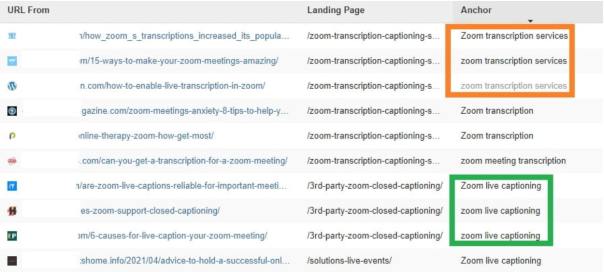

You can also track which types of websites (blogs, directories, niches, etc.) are linking to yours and try to diversify your link profile and linking sites.
Furthermore, you can calculate how many of your links have rel=”nofollow”, rel=”sponsored” and rel=”ugc” tags and that way try to diversify your link profile (as long as done wisely). These tags are not as bad as many might think and create a more natural link profile.
It Helps in Identifying and Removing Harmful Links
Monitoring your backlinks also helps in identifying links that may be harmful to your site.
When you choose a specific site to publish your article on, in most cases you will choose one that has a positive traffic trend, low spam score, high authority, etc. But what if the traffic on this site suddenly drops, because of a penalty/algorithm update/technical issue or its spam score increases?
Monitoring your backlinks can help you identify those traffic drops on sites that link to you. For example, in Linkody you can use the Ranking column and see how your links are doing in terms of traffic (the lower the number, the higher the traffic).
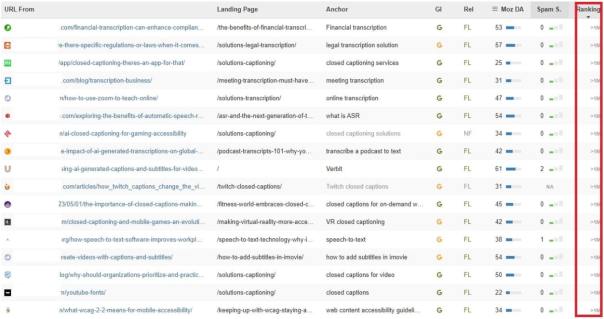

The screenshot above shows many domains with a high “ranking” number, which says their traffic has dropped dramatically since the link was added.
In addition, the Spam Score column shows numbers between 0-17. The higher the number, the worse it is. If you see an increase in a site’s Spam Score, you should check the site thoroughly and think if this link is still worth it.
Check Your Backlinks
Get an Instant Insight Into Who Links to Your Site


Google is Removing Many Pages from Its Index
In the recent 3 years, it has been observed that pages (mostly low quality) are removed from Google’s index without warning. In such scenarios, it is crucial to ensure that the web pages containing backlinks to your website are still properly indexed.
In case they are not, think about why the page was removed from indexing in the first place.
- Is it a low-quality article?
- Is the topic of the article talking about something that was already written a million times before like “10 best places in Las Vegas”?
- Is the article ranked for a keyword that brings traffic?
- Is there a path to reach the article from the home page?
- Did the webmaster of the linking site link to your article with internal links?
- Can it be found under a relevant category?
After you have answered the questions, contact the website owner and ask him to fix the issues, if any, and, if necessary, rewrite the article.
Then ask him to submit the URL for indexing through Google Search Console.
Competitor Research Made Easy
In addition to analyzing your website, you can also add your competitors and see which links they built recently and which strategy they are using to build them.
- You can also see which pages of your competitors are most linked and with what anchor text.
- Are their links coming from high-quality websites or low-quality ones?
- What anchor text they are using and in what percentage?
Use this information to improve your link-building strategy and stay ahead of the competition.
Disavow Links in Minutes
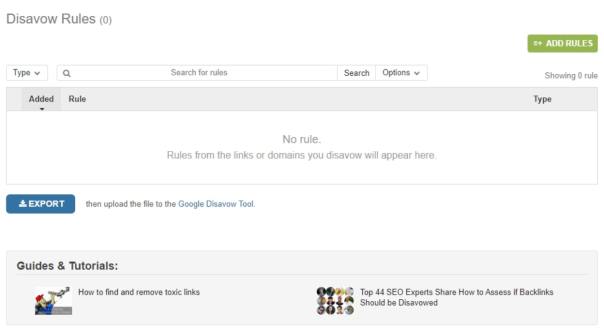

As mentioned earlier, in some cases, you may come across backlinks that are harmful to your website’s ranking. Some backlink monitoring tools like Linkody offer the disavow feature, which allows you to disavow links easily. This saves you time and effort in manually creating a disavow file and submitting it to Google Search Console.
Search Engine Algorithms Are Constantly Changing
Search engine algorithms are constantly changing and updating, and what works today may not work tomorrow. Monitoring your backlinks can help you identify any changes in your site’s performance that may be attributed to backlink issues.
When you see all of your backlinks in front of you, including their anchors, metrics, and target URLs, it becomes easier to analyze and strategize for future link-building.
- Maybe you should focus more on niche-related websites.
- Maybe the domain authority average of the sites linking to your website is too low?
- Maybe the number of backlinks that were built this year is too different from last year’s?
Analyze and adapt according to the current search engine algorithms to stay ahead in the game.
How Backlink Monitoring Can Save You Money (Real Story)
When I just started working as an SEO specialist on Verbit, an AI transcription platform, valued at over $1B, I decided to try a different approach in their B2C SEO strategy. As part of the new strategy, which included link monitoring, I used Linkody and discovered that a significant amount of the backlinks that were built by the previous SEO agency were low-quality or spammy links.
This was negatively impacting Verbit’s website ranking and organic traffic and removing them wasted a lot of time and money.
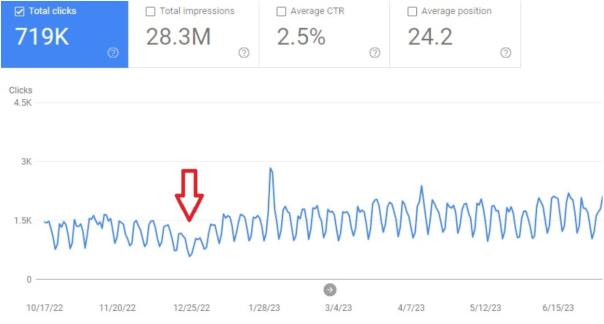

But other than that, we noticed that a large number of backlinks that were added in the last few months were removed, redirected, “no followed” or no longer appeared on the Google index.
This was a major problem as these backlinks were part of the paid link-building strategy, and cost thousands of dollars.
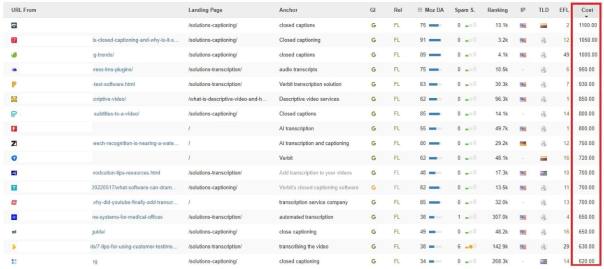

Our team had to spend extra time monitoring the backlinks and taking action on those that were being removed or redirected without notifying us.
Check Your Backlinks
Get an Instant Insight Into Who Links to Your Site
We spent many hours trying to contact the webmasters and asked them to restore those articles and links. Many of them didn’t even bother to answer or refused to restore the links.
This experience taught us a valuable lesson about the importance of backlink monitoring and how it can save you both time and money in the long run.
The estimated amount saved by restoring removed or redirected backlinks was significant, around $4000 over the entire year.
Another Lesson: Pay Publishers Only on Platforms That Protect Your Payment
Usually, website owners provide a guarantee period of only 1 year on purchased backlinks. After that, you may lose them and there is no way to get your money back from the vendor.
The problem is, that PayPal guarantee is only 180 days, so if the website owner guarantees your money back after a year – you’re already left without any protection.
Other platforms like Payoneer, and Wise (formerly known as TransferWise) do not offer any guarantee on payments that have been made, so in case the seller refuses to refund you for any reason – you’re out of luck.
This is why it’s important to only pay publishers on platforms that offer buyer protection for a longer period. That way in case of link removals you still have a chance to get your money back if not more than 180 days have passed.
Also, make sure to carefully read the terms and conditions of any platform you use for purchasing backlinks to ensure that your payments are protected in case of any issues. It’s always better to be safe than sorry.
A Link Vendor’s Point of View
As a link vendor, the understanding of how important to monitor your links is even higher. On one hand, you have a responsibility to your clients, to keep the links for the period agreed on in the contract.
On the other hand, you need to protect your business and make sure that you are not losing money by selling links that will eventually be removed (lack of professionalism) and you’ll make up for refunding your client, but without the ability to get a refund from the site owner who removed the link. In that case, you’ll lose 3 things:
- Time: The time spent finding the link, negotiating the price, and managing the contract.
- Money: The amount of money that you will need to refund your client for not keeping his links as agreed.
- Reputation: In today’s digital world, one bad review can ruin a business. If you don’t keep your links for the agreed period, it may cause a negative review from your client, which can hurt your reputation and potentially affect future business opportunities.
Therefore, as a link vendor, it’s crucial to use a link monitoring tool and regularly check the status of your links, as well as pay site owners only via trusted payment platforms that offer buyer protection.
What’s Important to Have in a Link Monitoring Tool
Most link monitoring tools have many features, but not all of them are a must-have. Here are some key features that you should look for when choosing a link-monitoring tool:
- Real-Time Monitoring: The tool should be able to check the status of your links in real-time, so you can quickly take action if any issues occur.
- Alerts and Notifications: It’s important to receive alerts and notifications when there are changes or issues with your links. This will help you stay on top of any updates and take immediate action if needed.
- Competitor Analysis: Some link monitoring tools offer competitor analysis, which allows you to see what links your competitors are getting without the need to analyze their sites and use various filters, like in other SEO tools.
- Link Quality: A good link monitoring tool should be able to check the quality of your links, including metrics like domain authority, spam score IP address, and estimated traffic, to ensure they are high-quality and relevant.
- Disavow Tool: If you notice low-quality or spammy links, the tool should have a disavow feature that allows you to add them to your Google Disavow file directly from the tool. It’s easier and faster.
- Tagging: Simple but very useful in case you work with more than 1 vendor on the same site. That way you can add a tag with the vendor’s name and know who you should contact in case of issues.
- Changelog: It’s helpful to have a changelog feature that shows the historical changes of your links, so you can track any issues over time.
- Changes of status section: A reliable link monitoring tool should have a section that shows status changes, like if a link becomes nofollow or if it is removed from a page without requiring you to access the complete dashboard and manually verify.
- Export and Integration Options: The ability to export your link data into a CSV or Excel file is crucial for tracking and analyzing your links over time. Additionally, integration options with other tools like Google Analytics or Google Search Console can provide valuable insights.
An informative section: Including explanations of how to use the tool, what each metric means and tips for improving your link-building strategy can be incredibly beneficial as well. This could include resources such as blog posts, tutorials, or even a support team available to assist with any questions or issues.
Final Words
If you haven’t already incorporated a link-monitoring tool into your SEO strategy, it’s time to consider adding one. These tools can save you money and time by identifying issues with your backlinks and helping you improve your overall link profile.
Plus, they provide valuable data and insights to help you make informed decisions about your SEO efforts.
If you work for an enterprise or big company that builds several links a month, it would be impossible to monitor them manually as well as keep track of any changes.
Also, the amount you can save by getting a refund for links that are no longer live could easily be more than the price you pay for a monitoring tool.
Nowadays SEO is complicated and more demanding than ever, automating your tasks is a must, and automated link monitoring should be a priority.


Moshe Ben Haim is an SEO expert and the founder and CEO of B.H Digital Marketing. With almost a decade of experience in the field, Moshe has helped countless clients increase their visibility and reach potential customers online. Before founding B.H Digital, Moshe worked as an SEO specialist at top-notch companies like Wix and 888 Holdings.
- SEO Powered Content & PR Distribution. Get Amplified Today.
- PlatoData.Network Vertical Generative Ai. Empower Yourself. Access Here.
- PlatoAiStream. Web3 Intelligence. Knowledge Amplified. Access Here.
- PlatoESG. Carbon, CleanTech, Energy, Environment, Solar, Waste Management. Access Here.
- PlatoHealth. Biotech and Clinical Trials Intelligence. Access Here.
- Source: https://blog.linkody.com/case-studies/how-to-monitor-backlinks-and-save-a-months-budget-in-a-year



